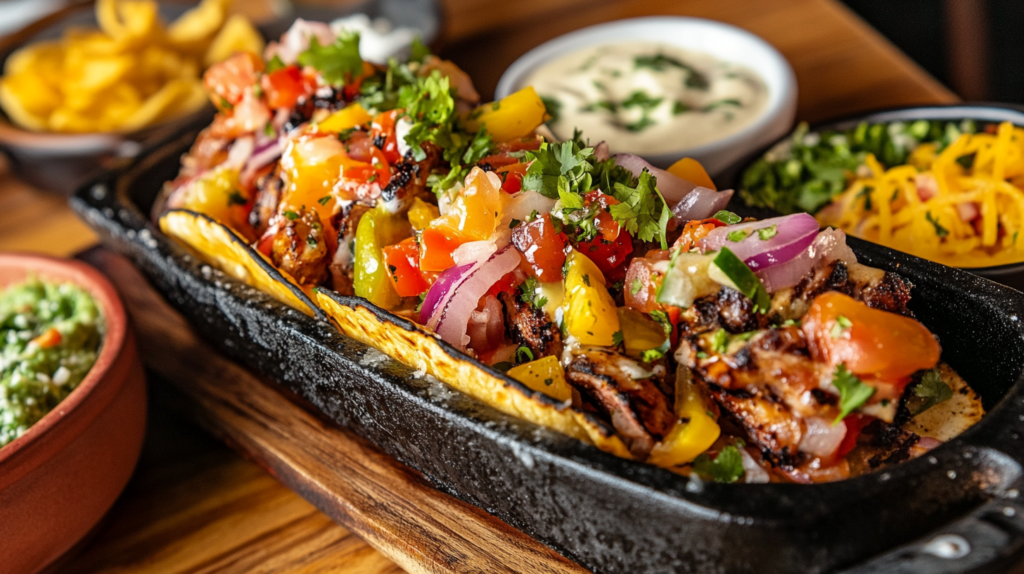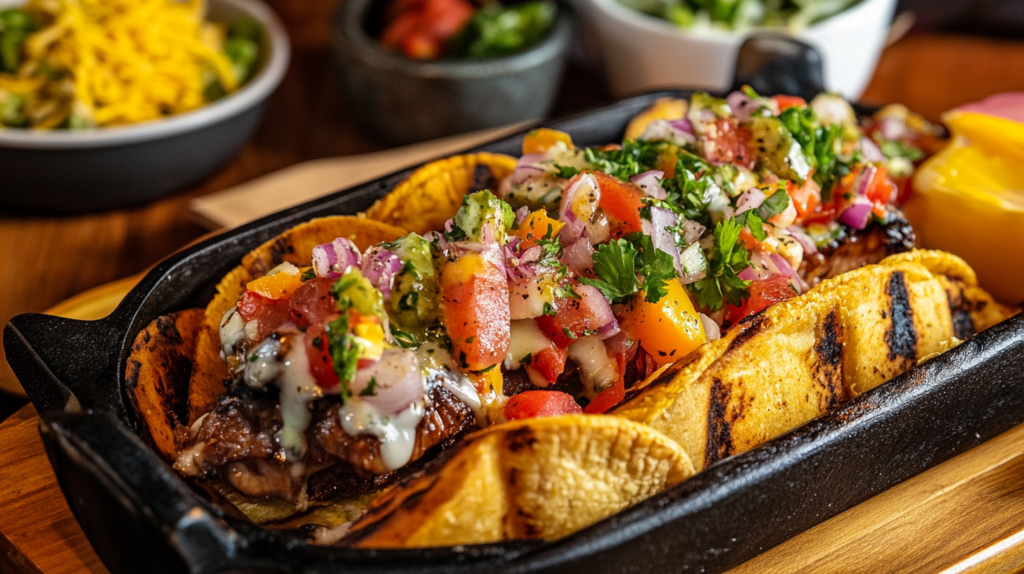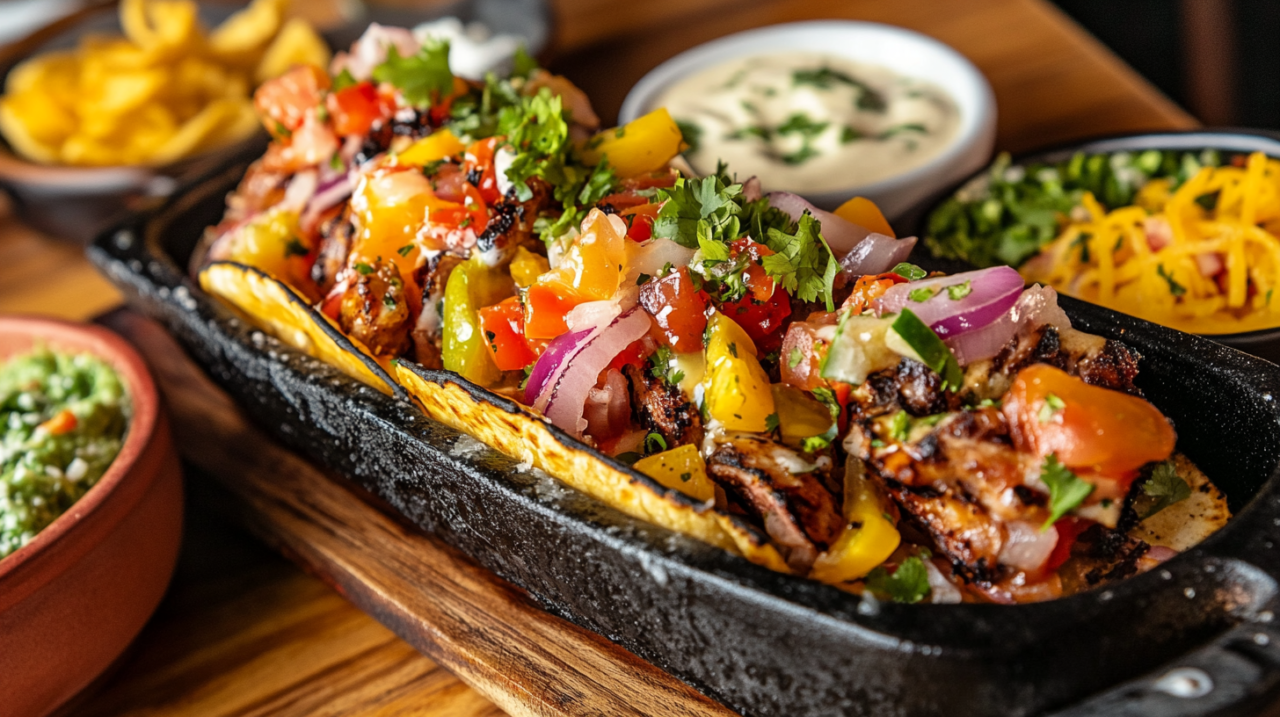What Are Tacos de Lengua?
Tacos de lengua are a cherished staple in Mexican cuisine, celebrated for their tender, flavorful filling of slow-cooked beef tongue. Served in warm tortillas and topped with fresh ingredients like cilantro, onions, and lime juice, these tacos offer a unique texture and taste that sets them apart from more common taco varieties.

What makes tacos de lengua truly special is their cultural significance. Rooted in centuries-old traditions, they embody the resourcefulness of Mexican cooking, where every part of the animal is utilized. By transforming a humble ingredient into a gourmet experience, tacos de lengua highlight the ingenuity and creativity that define Mexico’s culinary heritage.
For food lovers seeking a genuine taste of Mexico, these tacos are a must-try. Their rich flavor, combined with the vibrant freshness of toppings, ensures they remain a beloved dish in homes and taquerías worldwide.
The History of Tacos de Lengua
The story of tacos de lengua is steeped in history, tracing back to the early days of Mexican cooking. Indigenous peoples practiced nose-to-tail cooking long before the arrival of European settlers, making the most of every part of the animal. Beef tongue was valued for its tender texture and ability to absorb flavors, making it an essential component of traditional dishes.
When tacos emerged as a popular street food, lengua became a favored filling due to its rich flavor and satisfying texture. Over time, tacos de lengua spread across Mexico, with each region adding its own twist. Today, they are enjoyed around the world, appreciated not only for their taste but also for their connection to Mexico’s culinary roots.
This dish serves as a reminder of the importance of resourcefulness in cooking, turning an often-overlooked ingredient into a centerpiece of Mexican gastronomy.
What Is Beef Tongue (Lengua)?

Beef tongue, or lengua, is a muscle cut from the cow’s mouth. While it might seem unconventional to some, it’s prized for its tender, melt-in-your-mouth texture and mild, beefy flavor. Properly cooked, it transforms into a soft, flavorful meat that pairs beautifully with tortillas and a variety of toppings.
Nutritionally, beef tongue offers several benefits, including:
- Protein: A high-protein content supports muscle repair and overall health.
- Iron: Essential for producing healthy red blood cells and transporting oxygen throughout the body.
- Zinc: Supports immune function and aids in healing.
- Vitamin B12: Boosts energy levels and contributes to neurological health.
In addition to its nutritional value, beef tongue is versatile, absorbing the flavors of the seasonings it’s cooked with. This adaptability makes it a perfect candidate for tacos, allowing for endless variations.
Why Are Tacos de Lengua So Popular?
Tacos de lengua enjoy widespread popularity for several reasons. First and foremost is their unique flavor and texture. Unlike more common taco fillings, beef tongue offers a rich, buttery taste with a tender yet slightly chewy consistency. This combination creates a delightful contrast when paired with crisp toppings and soft tortillas.
Additionally, tacos de lengua are celebrated for their authenticity. They embody the traditions of Mexican cuisine, where ingenuity turns even the simplest ingredients into something extraordinary. For many, enjoying tacos de lengua is a way to connect with Mexican culture and experience the depth of its culinary heritage.
Their popularity also extends to adventurous eaters, who appreciate the opportunity to try something different and expand their palate. Whether enjoyed at a local taquería or prepared at home, tacos de lengua never fail to impress.
Check this as well for the best sweet : A Complete Guide to Quesillo: What It Is, Its Origins, and Uses
Key Ingredients for Tacos de Lengua
Creating the perfect tacos de lengua requires a combination of high-quality ingredients and thoughtful preparation. The essentials include:
- Beef tongue: The centerpiece of the dish, known for its tender texture and ability to absorb seasonings.
- Aromatics: Garlic, onions, and bay leaves are commonly used to infuse flavor during cooking.
- Corn tortillas: Traditional tortillas provide the perfect base, offering a slightly earthy, sweet flavor.
- Toppings: Diced onions, fresh cilantro, and lime wedges are classic accompaniments.
- Optional garnishes:
- Salsa verde for a tangy kick
- Pickled jalapeños for spice
- Queso fresco for a creamy balance
Each ingredient plays a role in enhancing the overall flavor, ensuring every bite of your tacos de lengua is memorable.
How to Prepare Beef Tongue for Tacos de Lengua
Preparing beef tongue is a straightforward process, but attention to detail is key. Follow these steps for tender, flavorful tacos de lengua:
- Cleaning: Rinse the beef tongue under cold water and trim any excess fat or connective tissue.
- Seasoning the broth: Combine water, garlic, onions, bay leaves, and salt in a large pot. These aromatics will flavor the tongue as it cooks.
- Cooking: Simmer the tongue in the broth for 2–3 hours, or until it becomes tender. For faster results, you can use a pressure cooker.
- Peeling: Once cooked, remove the tongue from the pot and allow it to cool slightly. Peel off the thick, outer membrane to reveal the tender meat underneath.
- Dicing: Chop the peeled tongue into small cubes, ready for use in tacos.
This preparation ensures that the beef tongue is tender, flavorful, and perfectly suited for tacos.
Cooking Methods for Beef Tongue
Different cooking methods can be used to prepare beef tongue, each with its own advantages:
- Boiling: This traditional method involves simmering the tongue in a seasoned broth, allowing it to absorb flavors while becoming tender.
- Slow Cooking: Using a slow cooker offers a hands-off approach, yielding incredibly soft meat after several hours.
- Pressure Cooking: Ideal for those short on time, this method significantly reduces cooking time while maintaining flavor.
Each method has its merits, but all result in tender beef tongue that’s perfect for tacos de lengua.
Authentic Tacos de Lengua Recipe
Here’s a detailed recipe for making authentic tacos de lengua at home:
Ingredients:
- 1 beef tongue
- 2 garlic cloves
- 1 onion, halved
- 2 bay leaves
- 1 teaspoon salt
- Corn tortillas
- Toppings: diced onions, chopped cilantro, lime wedges, and salsa
Instructions:
- Rinse the tongue thoroughly and trim any excess fat.
- Place it in a large pot with garlic, onion, bay leaves, and salt. Cover with water and bring to a boil.
- Reduce heat and simmer for 2–3 hours, or until tender.
- Remove the tongue, let it cool slightly, and peel off the outer membrane.
- Dice the meat into small cubes.
- Heat tortillas, fill them with the tongue, and top with your choice of garnishes.
This recipe provides a straightforward way to enjoy the rich flavors of tacos de lengua.
Topping Ideas for Tacos de Lengua
Toppings enhance the flavor and texture of tacos de lengua. While traditional garnishes are always a favorite, there are many creative options to consider:
- Traditional toppings:
- Diced onions
- Chopped cilantro
- Lime wedges
- Creative additions:
- Sliced avocado for creaminess
- Pickled red onions for tanginess
- Spicy chipotle salsa for a smoky kick
- Shredded cabbage for a crunchy texture
Experimenting with toppings allows you to customize your tacos and create a dish that’s uniquely yours.
Pairing Tacos de Lengua with Sides
Perfect sides can elevate your tacos de lengua meal. Popular pairings include:
- Mexican rice: A flavorful and hearty side dish that complements the richness of the tongue.
- Refried beans: Creamy and satisfying, they balance the bold flavors of the tacos.
- Fresh guacamole: Adds a creamy, refreshing element to the meal.
- Drinks: Traditional beverages like horchata, tamarindo, or a cold cerveza make excellent accompaniments.
These sides enhance the overall dining experience, making your meal more enjoyable.
Regional Variations of Tacos de Lengua
Tacos de lengua vary across Mexico, reflecting the diverse culinary traditions of each region:
- Northern Mexico: Grilled lengua offers a smoky, charred flavor.
- Central Mexico: Tacos are often served with spicy salsa verde and a sprinkle of queso fresco.
- Coastal regions: Incorporating tropical flavors like mango salsa adds a unique twist.
These regional differences highlight the versatility of tacos de lengua and the creativity of Mexican cooking.
Tips for Buying and Storing Beef Tongue
When buying beef tongue, consider the following:
- Look for a tongue with a fresh, pink color and firm texture.
- Avoid tongues with discoloration or an unpleasant odor.
- Store the tongue in the refrigerator and use it within 2–3 days, or freeze for up to three months.
Proper storage ensures that your beef tongue remains fresh and flavorful.
Common Mistakes to Avoid
Avoid these mistakes when preparing tacos de lengua:
- Skipping cleaning: Always rinse and peel the tongue to ensure a pleasant texture.
- Overcooking or undercooking: Both can negatively affect tenderness.
- Under-seasoning: Proper seasoning is crucial for flavorful tacos.
Attention to detail ensures that your tacos de lengua are a success every time.
Why You Should Try Tacos de Lengua
Tacos de lengua offer a unique culinary experience, perfect for food lovers looking to expand their horizons. Their rich flavor, tender texture, and cultural significance make them a standout dish in Mexican cuisine. By embracing this traditional recipe, you’re not only enjoying a delicious meal but also honoring the creativity and resourcefulness of Mexican cooking.
Conclusion
Tacos de lengua are more than just a dish—they’re a celebration of flavor, culture, and tradition. Whether you’re a taco enthusiast or new to Mexican cuisine, these tacos offer an unforgettable dining experience.

